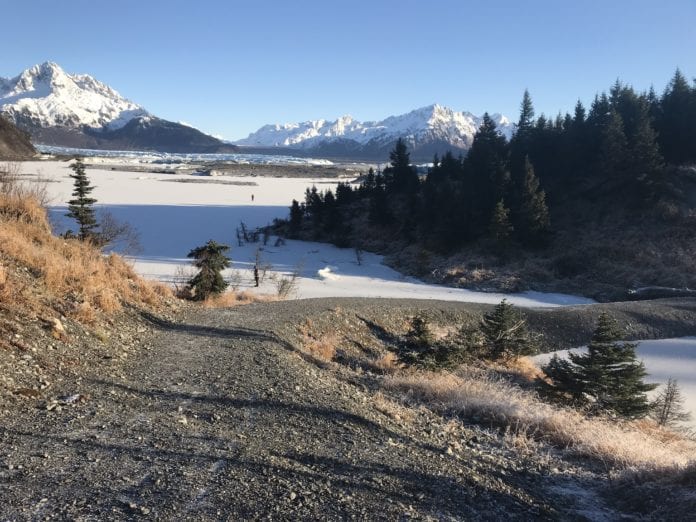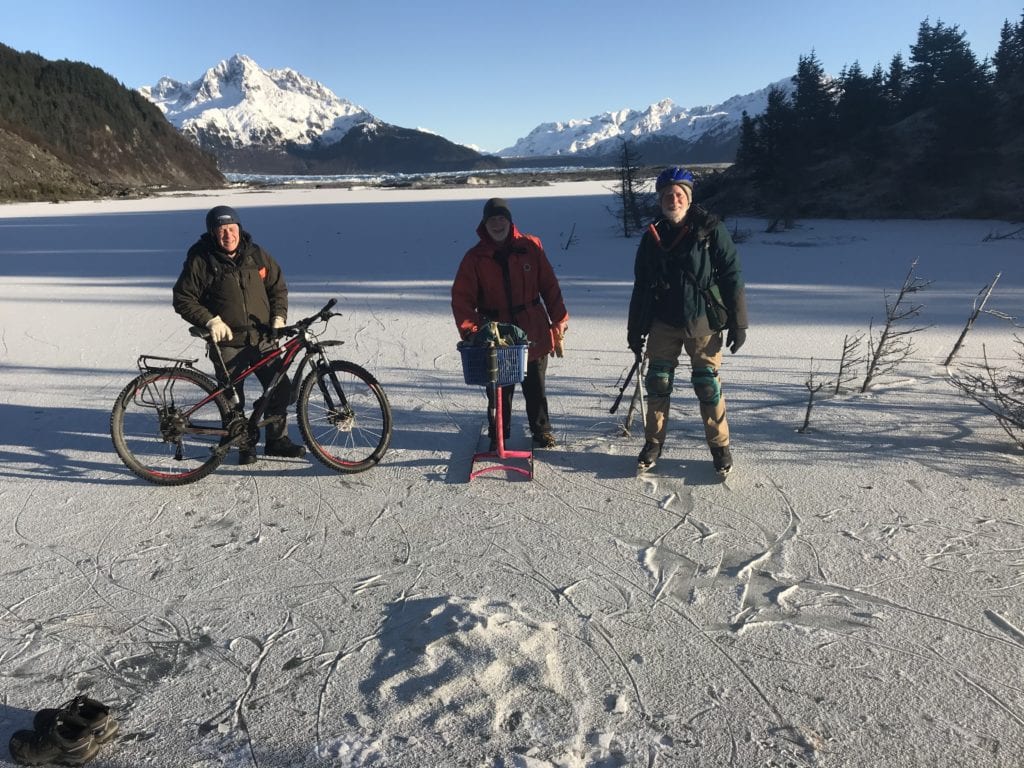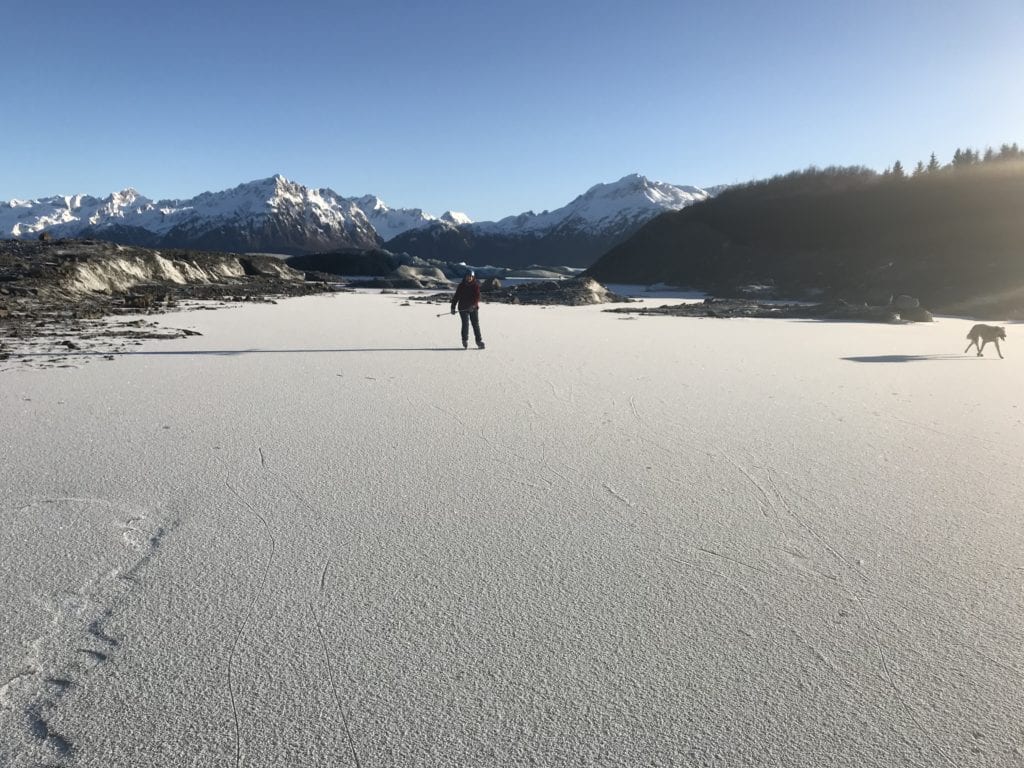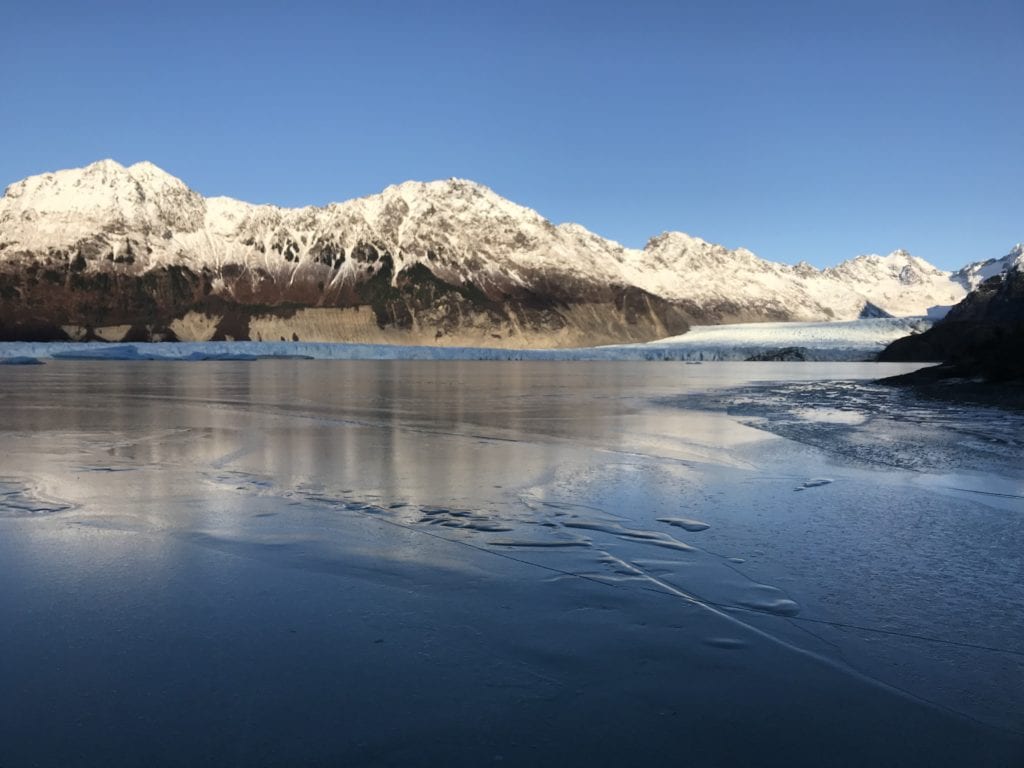
For the first time in the history of skating on Sheridan Lake, locals were able to access the spectacular berg-filled area without having to hike 3/4 of a mile over rocky and brushy terrain.
Due to the receding of Sheridan Glacier, ice skating aficionados have long been predicting the pond one-quarter of mile down the Sheridan Lake trail would be connected to the main lake; and on Nov. 14, it was Milo Burcham of the U.S. Forest Service who pioneered the new route between bergs to successfully make the connection.
It didn’t take other skaters long to catch on. The next day, quite a number of Cordovans were taking advantage of blue skies and excellent ice conditions to follow his skate marks; and the following day, 22 cars jammed the USFS parking lot at the trailhead for another calm warm day of great recreation.

The quest for “first ice” has been a quiet competition for years, with Cordovans including David Rosenthal, Karl Becker, Carlos Comparon, Guido Casciano, Jim Pahl and Dana Smyke, along with Burcham, usually at the fore.
Sheridan Lake traditionally freezes well ahead of Eyak Lake and other areas, due to its obvious colder conditions as well as frigid north winds off nearby mountains.
Often, a frustrating pattern of mixed rain and snow will spoil the formation of smooth ice, and access down Sheridan Road can be a challenge if it snows heavily.
The safety of the ice is always a concern. Guidelines suggest four inches as safe to walk on, and the ice thickness can vary significantly from one area to another.
On Sheridan Lake, the forward movement of the glacier creates pressure ridges near the face of the glacier, and sometimes further out, resulting in open water. On rare occasions, unusual warming condition have caused an iceberg to tumble over, creating waves and havoc with the nearby ice.
Many skaters now carry ice axes to carefully check the ice thickness, and some have ice picks on cords through the sleeves of their jackets for self-rescue should they happen to break through.
As the popularity of the area has grown, so has the variety of ways to enjoy the ice. Mountain bikes with fat or studded tires are now commonplace. Jim Pahl has pioneered the use of kick sleds, his being imported from Finland.
Others now use glide skates that attach to the bottoms of ski boots; and more and more skaters are using poles for added stability. Ice skates themselves have improved dramatically from the old leather hockey models. Many now have an insulated synthetic or plastic shell, with clever cable-tightening systems and buckles to make them easier to mount.

Toe warmers are another great invention of recent years, helping make cold feet, as well as hands, a thing of the past.
Skating with companions is always recommended, but every now and then that can lead to exciting moments.
Several years ago, David Rosenthal, Jay Beaudin and I were enjoying some ice that was so smooth and clear it seemed like we were skating on glass. We had been cruising along several yards apart but decided to gather to marvel at the conditions.
The added weight of the three of us in one spot was not a wise idea. We heard a loud crack and could see lines forming on the ice beneath us.
The quick-witted Beaudin hollered “Disperse!”
Which we did, and then speeded back to shore, quite a distance apart.
Take the proper cautions and enjoy the ice — safely.















